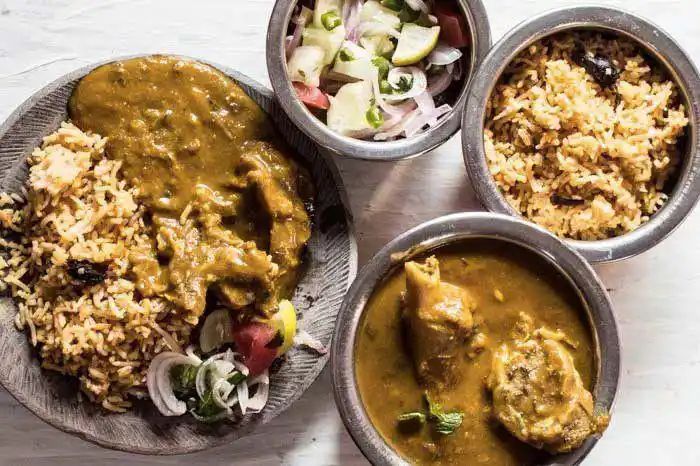
Arguably the most famous of all Parsi dishes, a name that's almost synonymous with traditional Parsi cuisine, d hansak is a simple preparation of lentils ( dhan ) and vegetables ( shaak ), served on a bed of caramelized brown rice and a kachumber (a salad of finely diced tomatoes, cucumbers, and onions with a squeeze of lime on top).
A cross between Persian and Gujarati dishes, d hansak is said to be a variation on the Persian stew k horesh, traditionally made with plums, meat, lentils, and vegetables. Any Parsi dish is a delicate balance of sweet and sour, all while packing a massive punch on flavour. The combination of meat and fruit is a typical of Parsi food and has Persian origins. After fleeing Persia to avoid persecution, the Parsis landed on the shores of Gujarat and became habituated to many sub-continental flavours, leading to a delicious cross-cultural repertoire of dishes.
When the British arrived on Indian shores, the Parsis adapted again by learning English, joining the Chinese trade, getting wealthy, and generally flourishing under an otherwise oppressive British Raj. Many Parsis were also employed as butlers in traditional English households, leading to Dhansak being introduced to them, and subsequently being found in many Anglo-Indian houses, and on the menus of British-Indian restaurants.
However, d hansak became popular only in the late 19th century because of the rapid industrialisation of Mumbai and Karachi. Parsis and Iranis set up little tea cafes (yes, that Irani cafe) selling tea, coffee, sodas, omelettes, and Dhansak to the local workforce.
Though these are the cultural background of the dish, we still don't know how it really originated. Through the years the story has become a convoluted game of Parsi whispers. Our best guess is that the dish is associated with the gambhar — a ceremonial ritual of communal eating to mark the changing of the seasons. It is believed that everyone within a local village came together to cook and eat, celebrate the harvest of the season, and sacrifice dhansak as an offering.
But to the surprise of any non-Parsi, and to the chagrin of any Parsi, d hansak is not made on any happy occasions. Instead, it is saved for the fourth day of mourning, or just for a regular Sunday meal at granny's home.
Wow this looks so attractive
Source of potential plagiarism
Plagiarism is the copying & pasting of others' work without giving credit to the original author or artist. Plagiarized posts are considered fraud.
Guide: Why and How People Abuse and Plagiarise
Fraud is discouraged by the community and may result in the account being Blacklisted.
If you believe this comment is in error, please contact us in #appeals in Discord.